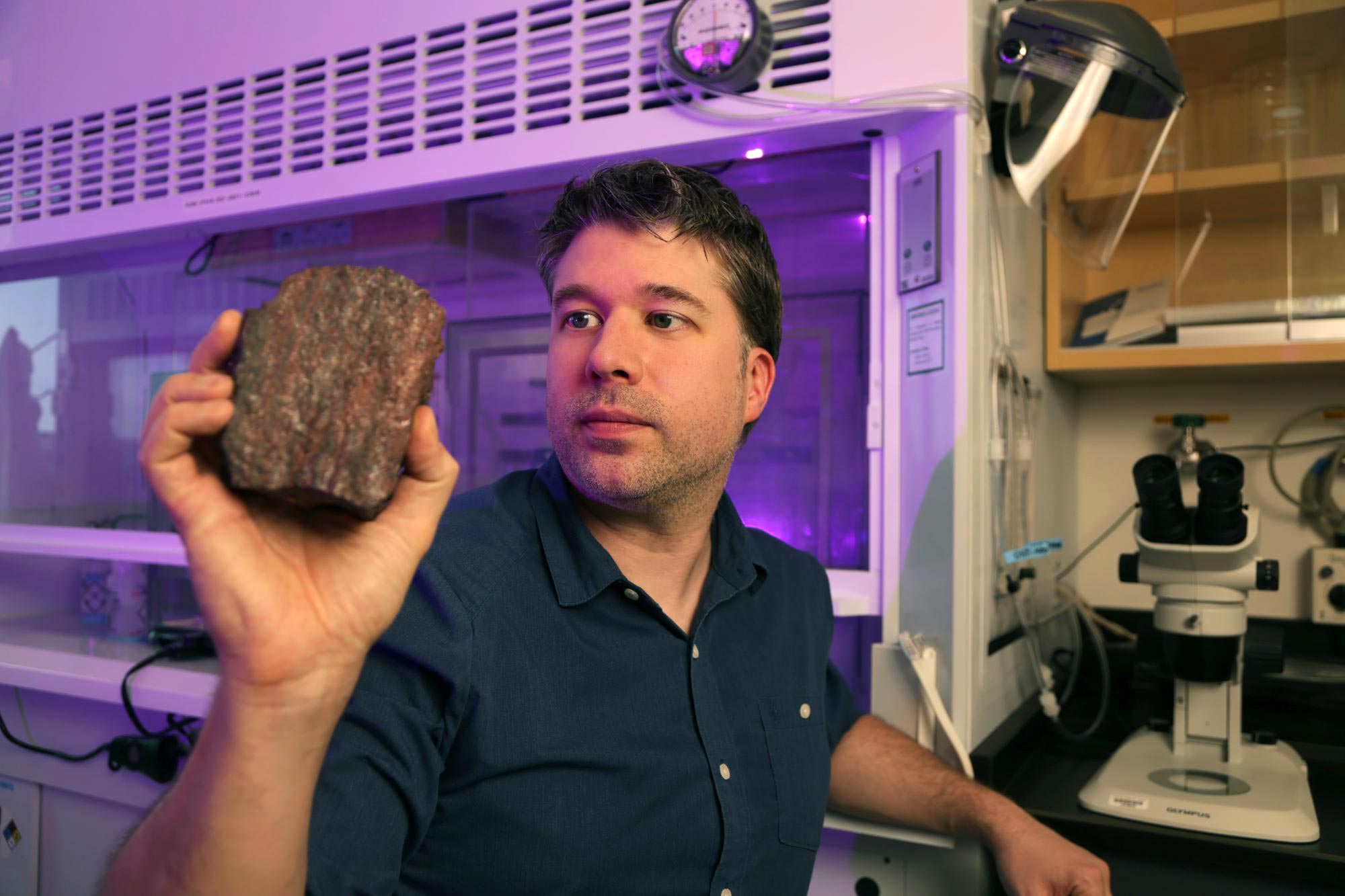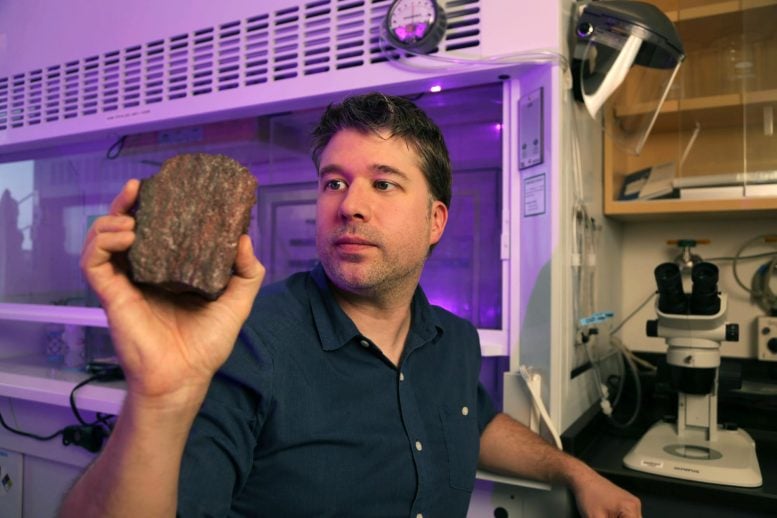

https://www.eurekalert.org/news-releases/1054055
Researchers find carbon in 3.9-billion-year-old Canadian rocks.
Scientists have revealed that graphite found in ancient iron formations at Saglik-Hebron in Nunatsiavut, once thought to indicate the earliest forms of life on Earth, likely has abiotic origins.
Early life on Earth
The carbon isotopic composition of iron formations from the Saglik-Hebron Complex in Nunatsiavut (northern Labrador) has long been considered evidence of the oldest traces of life on Earth. But a new study by the University of Ottawa, Carleton University and University College London suggests otherwise.
The study shows that the petrographic, geochemical and spectral features of graphite (the crystalline form of carbon) found in the Saglik-Hebron chemical sedimentary rocks are in fact “abiotic,” that is, non-living or lifeless physical or chemical aspects of the environment.
The non-living nature of graphite
This enhances our understanding of how early biomass was transformed on Earth, with a focus on the interaction between non-biological processes and the remains of ancient life. The study of graphite materials is key to deciphering the carbon cycle on early Earth.
This study is of vital importance in the search for ancient life on Earth and perhaps on neighboring planets.
New methods in geochemical analysis
The researchers used micro-Raman spectroscopy and re-examined the isotopic signatures in these rocks. Their results showed that the graphite likely came from liquid materials containing carbon, hydrogen and oxygen, and may have formed as a result of the decomposition of ancient organic matter.
“Our study focuses on chemical sedimentary rocks from the Saglek Hebron region. These rocks, which are among the oldest on Earth, dating back 3.9 billion years, were formed by oceanic rainfall. They include striated iron formations that may have been formed by bacterial activity,” explained co-author Jonathan O’Neill, associate professor in the Department of Earth and Environmental Sciences at the University of Ottawa.
Revisiting geological signatures
“They are ideal for studying ancient biological processes,” O’Neill adds. “Our study challenges the previous interpretation that the carbon isotopic composition of these rocks indicates a biological origin, but their spectral properties indicate abiotic characteristics. This prompts us to reconsider the processes responsible for the isotopic signatures and how they can be linked to the work of microorganisms.”
Research over the past year has focused on samples collected in Nunatsiavut during a field campaign in 2016. Petrographic characterization was conducted in Ottawa and graphitic carbon spectroscopy was performed in London, UK.
Graphite carbon origins
“Graphitic carbon has been studied from three sedimentary rock samples that are approximately 3.9 billion years old. Spectral analysis of this graphitic carbon indicates that it was formed from metamorphic fluids (at temperatures greater than 500 degrees Fahrenheit).Oh“C) Not through processes involving the action of bacteria,” says O’Neill.
Research shows that graphite in rocks may have formed without the presence of organic life, perhaps through the process of carbon extraction. The degree of crystallinity of graphite is related to the metamorphism of rocks, suggesting that metamorphism affects the preservation and alteration of carbon-based materials.
Reference: “Abiotic synthesis of graphitic carbonates in Eurasia’s Saglek-Hebron metamorphosed sedimentary rocks” by Zixiao Guo, Dominique Papineau, Jonathan O’Neill, Hanika Rizzo, Zhongqiang Chen, Shen-Cheng Qiu, and Chen-Ping Shi, July 6, 2024, Nature Communications.
doi: 10.1038/s41467-024-50134-1

“Web maven. Infuriatingly humble beer geek. Bacon fanatic. Typical creator. Music expert.”





More Stories
SpaceX launches 23 Starlink satellites from Florida (video and photos)
A new 3D map reveals strange, glowing filaments surrounding the supernova
Astronomers are waiting for the zombie star to rise again